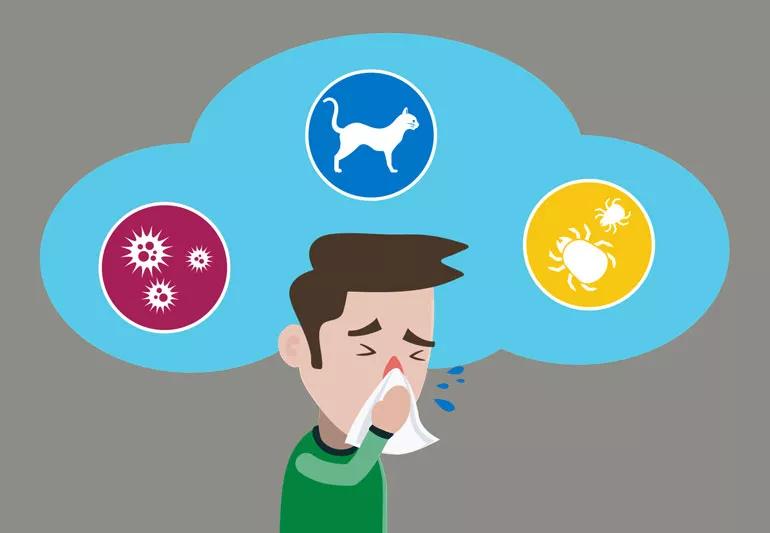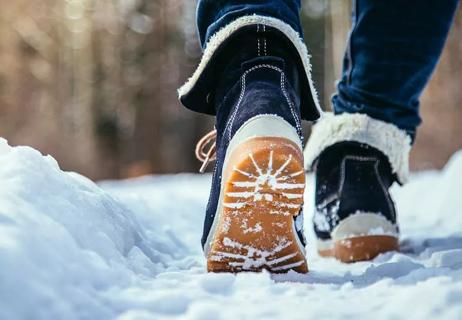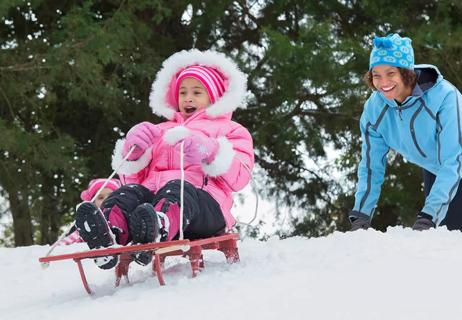With planning and precautions, you may be able to keep winter health issues at bay

Winter isn’t easy … and we’re not just talking about shoveling snow off the driveway. The cold-weather months bring a blizzard of health issues ranging from flu bugs to dry skin to the winter blues.
Advertisement
Cleveland Clinic is a non-profit academic medical center. Advertising on our site helps support our mission. We do not endorse non-Cleveland Clinic products or services. Policy
But there are steps you can take to minimize problems and remain healthy and happy until spring. (An added bonus? These steps don’t require snow boots.)

Winter can be rough on your lips. The cold air outside and the furnace-dried air inside work in tandem to dry out your lips, which can leave them painfully chapped and cracked. Want to avoid that ordeal? Start with these six tips to protect your lips from dermatologist Melissa Piliang, MD.

Think about how carefully you treat a cashmere sweater. Take that same gentle approach while caring for your hair during the winter months, says dermatologist Wilma Bergfeld, MD. Gentle brushing is one of many tips to keep your tresses healthy.

Winter weather can leave your skin itchy, red and flaky. That can turn into a BIG pain given that we’re talking about your body’s largest organ. Dermatologist Alejandra Estemalik, MD recommends these seven tips to feel more comfortable in your own skin.

Sniffing dry winter air can dry out your sinuses. And while the thought of less gooey mucus in your nasal cavities might sound enticing, it’s not ideal. The reason? That gunk protects you by trapping germs before they infect you.
That’s part of the reason why respiratory ailments such as bronchitis, sinusitis and even nosebleeds are so common during winter. Use these tips to protect yourself, says family medicine physician Daniel Allan, MD.
Advertisement
Winter asthma can be a big issue, too. Here are seven ways to manage it from pediatrician Roopa Thakur, MD.

The importance of washing your hands has been mentioned a time or two over the past few years with COVID-19. Guess what? It’s not just a good idea during a pandemic. Good hand hygiene can help you better avoid everything from the flu to pink eye, explains ophthalmologist Rishi P. Singh, MD.

Notice a common theme in all of the previous items? Yep — it’s dry air. Running a humidifier can help resolve the issue that opens the door to many problems. Learn how to get the most out of your humidifier from pulmonologist Kathrin Nicolacakis, MD.

Allergies don’t take the winter off. Being cooped up inside during cold weather months can make life tough for anyone allergic to dust mites, molds or pets. Allergist Sandra Hong, MD suggests these tactics to keep sneezing and itchy eyes to a minimum.

Winter brings holidays … which brings festive gatherings … which brings food. Lots and lots of food. It’s common to pack on a few pounds during the colder months. Want to prevent it? Keep up your fitness routine by learning how to safely stay active in the cold with these tips from orthopedic surgeon Michael J. Scarcella, MD.

Sunlight makes increasingly rare appearances for much of winter, which can make your mood … well, a bit dark. Don’t ignore symptoms of seasonal affective disorder (SAD), which include sleep disturbances, decreased energy and a lack of motivation.
Psychologist Adam Borland, PsyD, notes that light therapy is one of several methods that can be used to brighten your days. Talk to a healthcare provider before starting a program.
Advertisement
Learn more about our editorial process.
Advertisement

Used correctly, a humidifier can help with nose bleeds, allergies, dry skin, sleep quality and more

Stretch before heading outside, keep proper form and avoid jerking or twisting to throw snow

If the flakes are undisturbed, pristine white and come from the top layer, it’s typically safe to indulge in a scoop

Bottom line? Dress warm, be careful and plan ahead to get the most out of the season

Sneak in exercise when you can, pack your own lunch and make time for mental health

Taking slow, short steps and wearing proper footwear can go a long way in preventing falls

An ER doc shares tips for being careful while having fun

Some heat escapes if you don’t wear a hat, but it’s not as much as you might think

Start having sex about 72 hours before ovulation, then at least every other day during your fertile window

Attachment theory suggests that your earliest relationships shape connections throughout your life

It isn’t a recognized mental health disorder, but research shows that problematic social media use can negatively affect your mental health, self-esteem and sleep